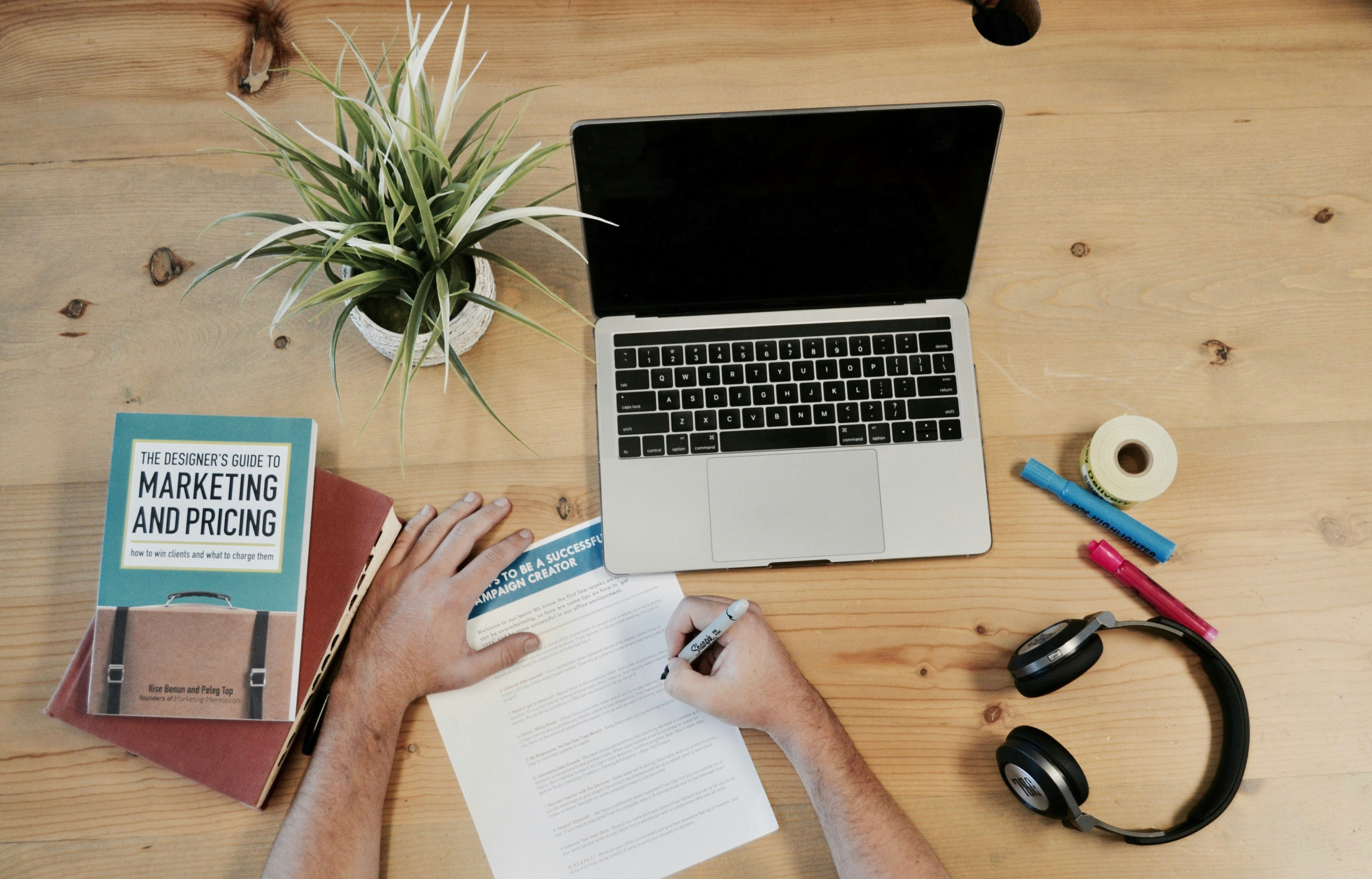If you’re going to run a sustainable influencer marketing campaign, you need influencer marketing tools.
Period. End of discussion.
Yes, you can do it for a while by searching hashtags on Instagram or TikTok, but let’s be honest–you have better things to do with your time, especially when there are tools that can make the process much more streamlined and organized.
Without tools, you risk missing out on the best influencers for your brand.
But you run an even bigger risk of being unable to track and analyze your campaigns effectively. And, if you don’t know what’s working from your influencer marketing campaigns, you might as well throw your ad dollars down the toilet.
In today’s article, we’ll show you some of the best influencer marketing tools to help find influencers, collaborate with them, and measure the performance of your campaigns. That way, you’ll know where the best ROI is and can make smarter decisions in the future.
Because we know that budgets vary, we’ll cover paid and free influencer marketing tools that range from “inexpensive” to “whoah, it’s how much?” That way, you’ll have a good feel for what’s out there.
Let’s get started! 🎉
What are Influencer Marketing Tools?
Influencer marketing tools help you discover influencers, connect with them, manage your campaigns, and track influencer performance.
You can think of them as the software you need to run influencer campaigns smoothly and efficiently.
A good influencer marketing tool will save you time and money by making it easier to run campaigns.
For example, instead of searching for hours on Instagram and TikTok to find influencers, you can often use an influencer marketing tool to connect with influencers actively looking for work. (That’s part of what we do at Social Cat!)
Ideally, you’ll find an influencer marketing tool that makes every step of your collaboration process more straightforward–but every tool has different strengths, which we’ll cover in-depth in this article. That way, you can pick the tools that best fit your brand!
Free or Paid Influencer Marketing Tools: Which is Right for Your Brand?
Influencer tools come at all price levels–from free to super premium. Let’s consider the pros and cons of free vs. paid tools together:
Advantages of Free Tools
Here are the good parts of using free influencer marketing tools:
- They don’t cost anything (at least, they don’t cost money).
- They have basic features that will do the job if you’re only trying to work with a limited number of influencers per month.
- They can be a great way to test influencer marketing without committing too many resources to it.
If you’re looking for the advantages of a free platform plus the advantages of paid tools, look for influencer marketing tools that offer free trials. Those are a great way to test everything out while providing better functionality.
We offer a free trial at Social Cat, so feel free to check it out. You can cancel anytime!
Disadvantages of Free Tools
Here are the downsides to using free influencer marketing tools:
- You’re pretty limited in the functionality you get. Most platforms will block the features you need most, trying to get you to upgrade to a paid plan.
- There’s much less support if you’re a free user.
Advantages of Paid Tools
Here are the good things you can expect from paid influencer tools:
- You’ll have access to more robust features.
- You’ll have fewer or zero limits on how often you can use them.
- You can scale your influencer campaigns much more quickly.
- You’ll be able to use any extra features the platform offers.
Disadvantages of Paid Tools
The main disadvantage of using paid influencer marketing tools is the price. I’m sure that’s not surprising to you–but what might be surprising is that many of the tools on the market can cost you thousands of dollars.
Obviously, that’s not ideal for most small to medium-sized companies. So, let’s look at the top influencer marketing tools in each category to see what you get for the money.
Top Free Influencer Marketing Tools
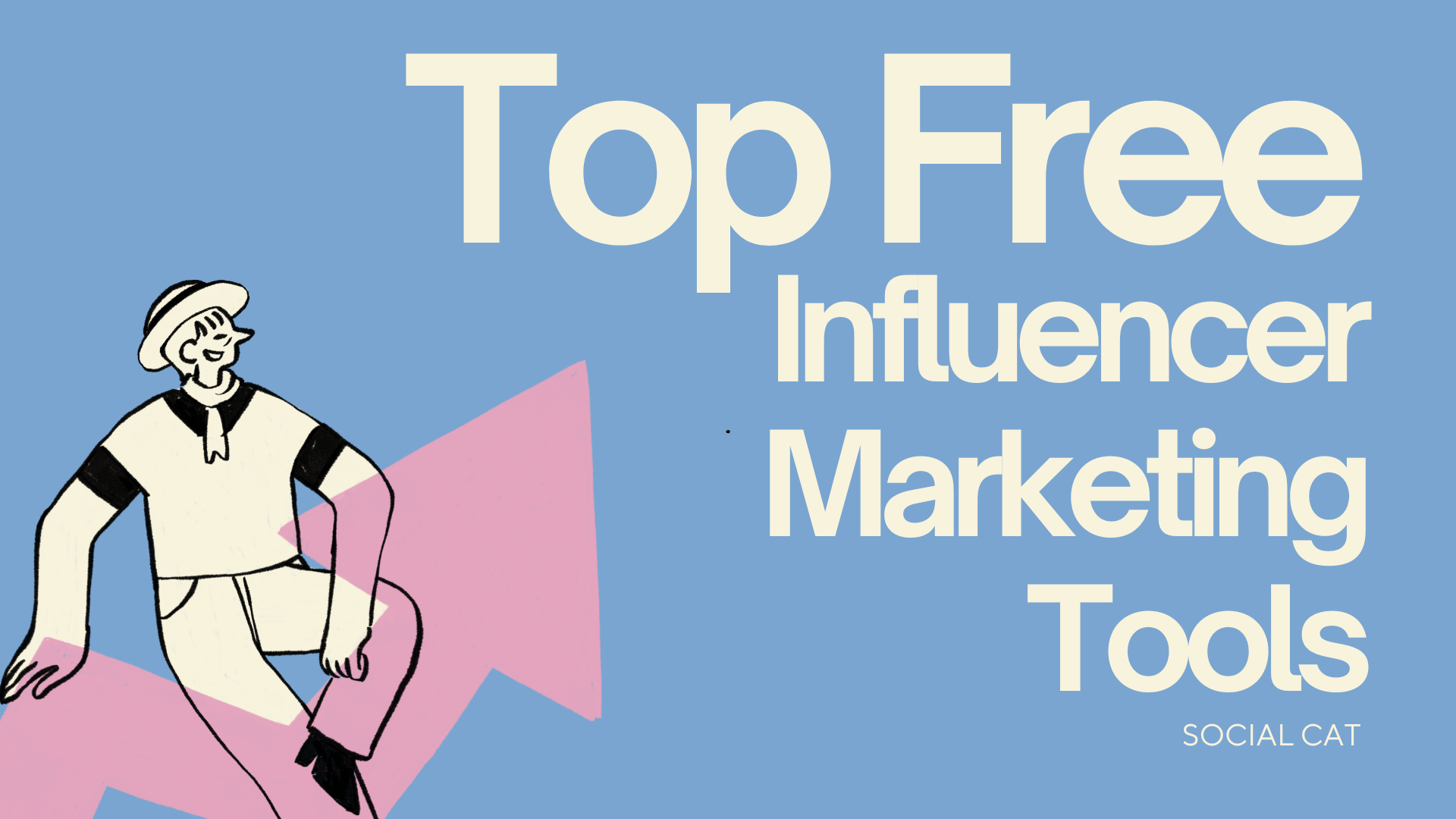
If you want or need to start with a free influencer marketing tool, here are the best options:
Social Cat
Social Cat is an influencer marketing tool that helps brands discover, engage, and collaborate with influencers. Our platform enables you to manage your brand's entire influencer marketing process from start to finish.
We offer a free, full-access trial to test it out and see if it’s a good option for your brand. The free trial lasts for 7 days, and if you decide to keep using our platform, there’s no commitment–you can cancel anytime.
Influencer Analytics by Upfluence
This super cool Chrome extension provides detailed information about influencers you find online.
If you’d like to use it, simply head to the Chrome Store and search for “Influencer Analytics by Upfluence.” Install it, and then, when you find an influencer on Instagram, just click the extension, which will give you a ton of information about them.
The only downside here is that you’re limited to 10 searches a day, which might do the job if you aren’t hoping to collaborate with a ton of influencers. Still, around 300 influencers each month isn’t anything to sneeze at.
HypeAuditor’s Suite of Free Tools
The team at HypeAuditor offers brands a suite of free tools to audit their social media profiles, calculate engagement rates, monitor account quality, and calculate pricing.
Most of these tools are entirely free, but some have limited functionality. You might only be able to use them a few times, or not all the features are available without a paid upgrade.
Top Paid Influencer Marketing Tools
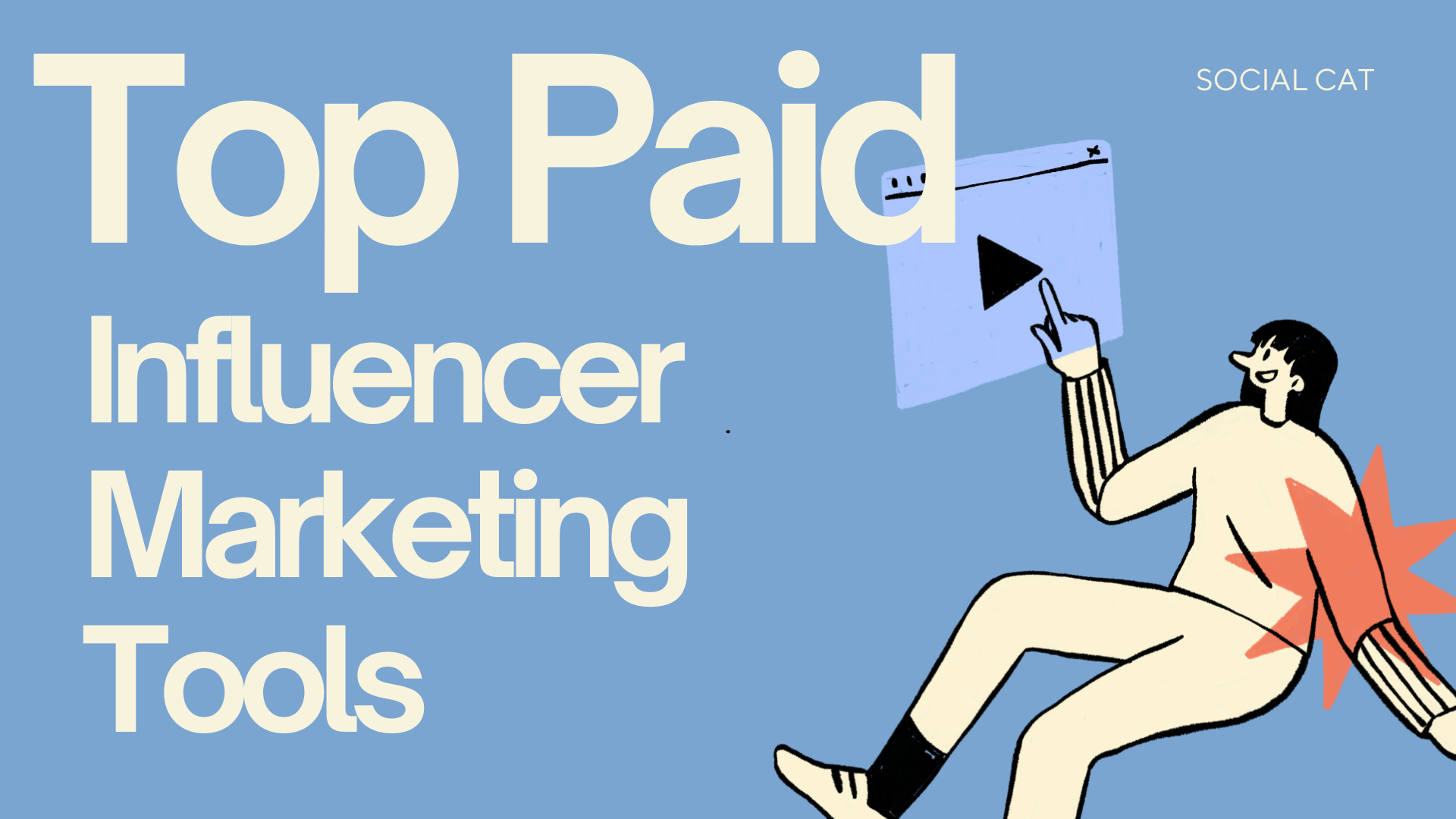
If you’re ready to leap to paid influencer marketing tools, here are some of the best:
Modash
Modash is a premium influencer database in terms of price and functionality. Here are the pros and cons of working with them:
Pros:
- You can view stats on over 250 MILLION influencer profiles on their database.
- They have robust influencer campaign tracking features.
- There are built-in sales processing and email tools that you can unlock at higher price points.
Cons:
- It is VERY expensive, and you’re limited in the number of actions you can take monthly.
- Influencers don’t opt into their platform, so you must do cold outreach, meaning you need to reach out to influencers via email.
- They’re built for companies that have dedicated, full-time influencer marketers. So, if you’re a smaller brand, you may not have the time to use their product fully–which would be a shame since you’d be paying for that extra functionality.
GRIN
Grin has a LOT in common with Modash. Here’s what to look for:
Pros:
- They have integrations with sites like Gmail and Shopify
- Per their website, their software walks you through everything you need to run an influencer marketing program.
- They focus on helping you create an influencer + creator pipeline so you always have content to post and use in ads.
Cons:
- It’s expensive. So expensive that they don’t even list the prices on their website.
- Influencers don’t opt into their platform (like Social Cat), so you’re still doing cold outreach.
- Because they rely on publicly sourced data, it’s not always up-to-date.
Insense
Insense connects brands with creators who can deliver UGC, organic posts, and whitelisted ads. Here’s what you can expect if you work with them:
Pros:
- They have a HUGE library of over 20,000 creators.
- You can automatically pull look-a-likes based on the profiles of creators you’ve loved working with.
- You can post briefs and have influencers come to you.
Cons:
- They’re expensive, and there’s no free trial.
- They charge an additional marketplace fee on all campaigns you run through them.
Best tools to find influencers
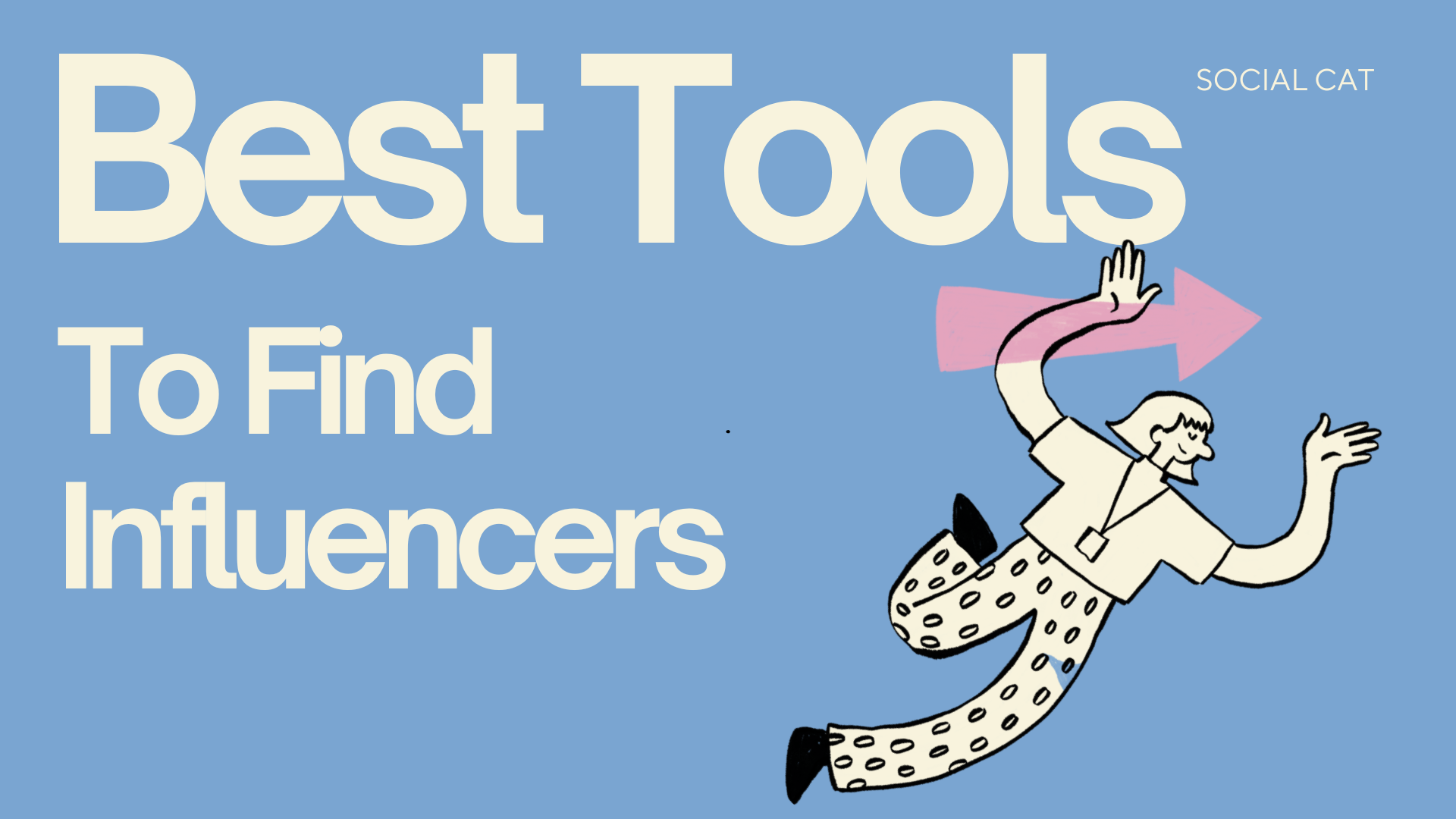
Here’s what your brand needs to make influencer marketing a more manageable process:
- Influencer search capabilities. You should, at minimum, be able to refine your search to zero in on the influencers you’re looking for.
- On-platform messaging or other influencer outreach software. Ideally, you’ll be able to start conversations with influencers on the platform. But, if not, you need some way to make influencer outreach easier–like email campaign software.
- Influencer content tracking. You need a way to receive high-definition content, track where you are with your influencers, and look at how your content is performing. The process quickly becomes unmanageable if you don’t have a way to see all of this at a glance.
- Bonus: The ability to list briefs and have influencers apply to work with you. Not every platform has this, but it’s a fantastic way to reduce your time searching for influencers.
The best influencer marketing tools will have most or all of these elements. So, let’s look at some of the best tools to find influencers and see how they stack up!
Social Cat
Social Cat offers comprehensive search features that help brands find influencers based on niche, hashtags, location (including state, city, or postal code), engagement rates, and audience demographics.
You can use our search functionality to select from 30,000+ vetted micro influencers on Instagram or TikTok and then invite them to collaborate on a specific campaign on our platform.
Your price is determined by the number of collaborations you want to work on each month–so if you’re just getting started, you get to pay less!
We focus mainly on connecting brands with influencers who are getting started and are interested in gifted collaborations. You can also scale your influencer campaigns with affiliates and paid collaborations on our platform.
We never take a cut of the fees you pay to influencers, and we don’t charge payment processing fees. All you pay us is your subscription cost–anything else goes directly to the influencers you work with.
Just ask MatchaKo, who used Social Cat to connect with 70 influencers and reached over 255,000 new potential customers. Their collaborations have paid off, resulting in increased sales and brand awareness.
Here’s how Social Cat stacks up based on what brands need in an influencer marketing tool:
✅ On-platform messaging
✅ Influencer content tracking
✅ Influencers can apply to work with you
Upfluence
Upfluence offers a comprehensive platform for influencer marketing, focusing on creator discovery, management, payments, and tracking.
The platform helps brands identify suitable influencers, emphasizing the potential of existing customers who are more likely to collaborate. It uses data to match brands with creators that align with their values and performance metrics.
Upfluence streamlines influencer management through an automated workflow tool and provides templates for contracts and outreach. This isn’t as convenient as on-platform messaging, but it’s at least something to make the hiring process smoother. Their platform also integrates with Gmail.
You can also track the effectiveness of your influencer and affiliate campaigns with detailed dashboards, measuring metrics like sales, ROI, and individual performance.
Ultimately, Upfluence aims to help brands build valuable partnerships with creators to enhance business growth.
Let’s see how Upfluence compares to our list of essential features:
✅ Influencer search
❌ On-platform messaging
✅ Influencer content tracking
❌ Influencers can apply to work with you
Collabstr
Colabstr is a platform that enables brands to find and hire influencers from Instagram, TikTok, and YouTube.
Their user interface looks–weirdly enough–a lot like Airbnb for influencers, which emphasizes visuals and pricing.
You can search through various vetted influencers without any upfront costs or subscriptions–Collabstr takes a 15% transaction fee on top of what you pay the influencers you work with on their platform. And, as you might’ve guessed, the pricing is straightforward and clear.
Communication with influencers takes place directly on the platform. Brands can post campaigns with specific requirements regarding influencer demographics, such as niche and location. This is good because the packages the influencers on Collabstr offer can be niche and overpriced.
They also provide a real-time dashboard for tracking content performance across various platforms. Users can access detailed analytics and reporting features to assess metrics like impressions and engagement, with data updated daily.
Overall, Colabstr aims to streamline influencer marketing, offering brands a straightforward experience connecting with creators and monitoring campaign performance.
Let’s see how they do on the essentials:
✅ Influencer search
✅ On-platform messaging
✅ Influencer content tracking
✅ Influencers can apply to work with you
Heepsy
Heepsy is a platform that facilitates influencer marketing by providing search and analytics tools, similar to many other influencer marketing tools on this list.
The platform offers detailed insights into influencer profiles, helping brands assess authenticity and audience engagement for informed decision-making. They also offer reporting features, providing insights into traffic, media statistics, and the impact of influencer collaborations.
Using their platform, you can easily compile lists of preferred influencers and contact them in bulk. It’s not the same as messaging them directly, but it’s the next best thing.
Brands can also post briefs on Heepsy's marketplace, allowing influencers to apply for collaboration. Heepsy provides tools for seamless campaign management, including flexible pipelines, simple payment options, and an integrated media gallery.
Overall, Heepsy aims to simplify the influencer marketing process for agencies, advertisers, and brands through its user-friendly features and extensive network of influencers.
Here’s how Heepsy stacks up against our essential features list:
✅ Influencer search
❌ On-platform messaging
✅ Influencer content tracking
✅ Influencers can apply to work with you
Creator IQ
CreatorIQ is a platform designed to enhance brand creator marketing. It emphasizes the impact of authentic creator-led content and sees creators as central to any brand’s marketing efforts. Creator content is often more genuine and engaging than traditional content–so they’re definitely onto something there.
CreatorIQ utilizes AI for creator discovery and smart recommendations, streamlining the influencer search process. Their influencer tracking tools make it easy for brands to manage their campaigns in one place, integrating all creator data, content, and processes.
The platform provides robust reporting and analytics to help brands measure impact and optimize their strategies.
Overall, CreatorIQ aims to empower brands to leverage the potential of creator marketing through innovative solutions and strong partnerships.
Let’s see how they do with our essentials list:
✅ Influencer search
❌ On-platform messaging
✅ Influencer content tracking
❌ Influencers can apply to work with you
Influencer tools for outreach
If you cannot message influencers directly on a platform or are committed to manual influencer searching, you’ll need help.
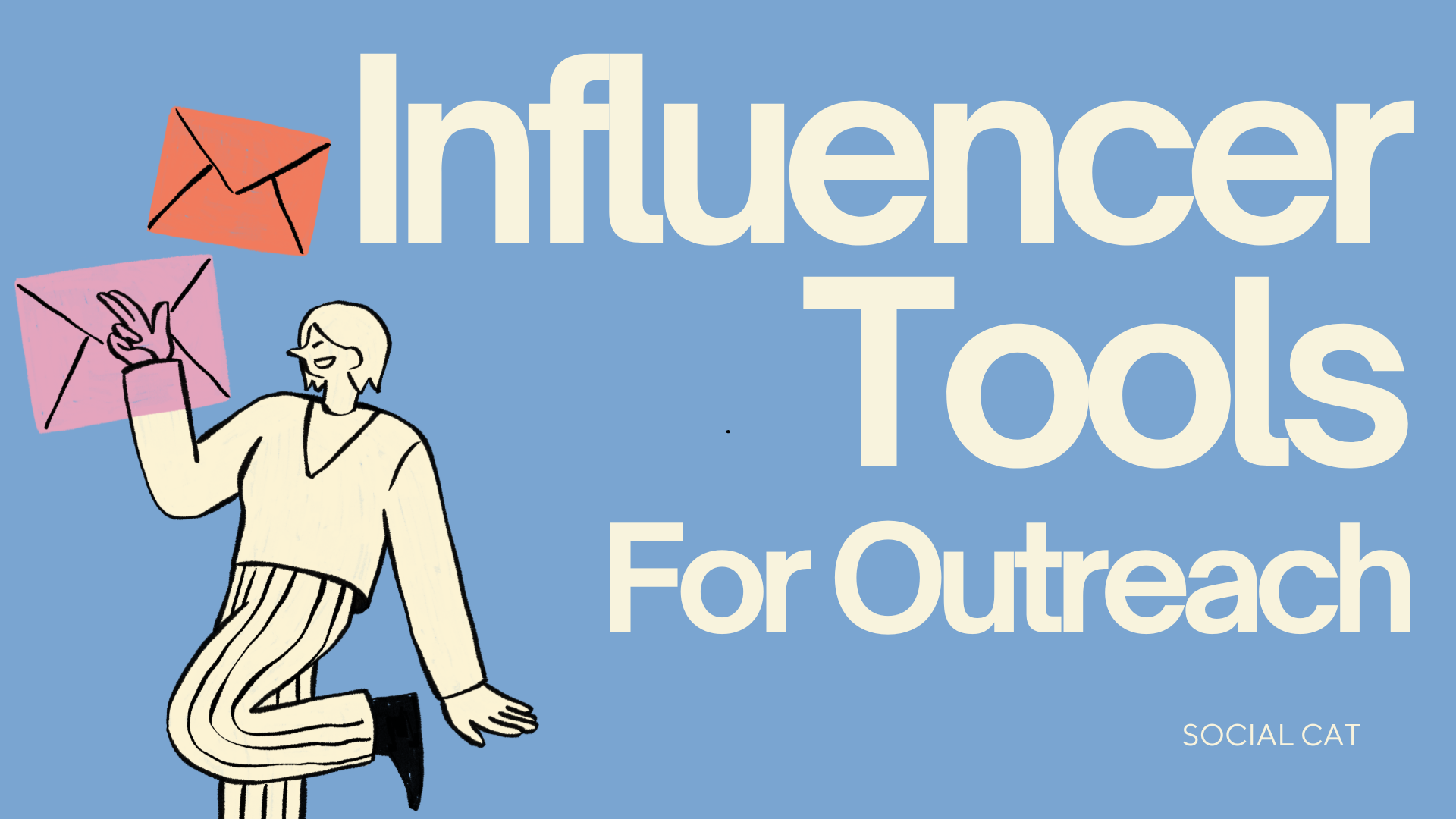
These influencer tools for outreach will make the process much smoother–although we’d like to point out that if you pick influencer marketing tools with built-in messaging or other communication features, you probably won’t need influencer tools for outreach at all.
Ninja Outreach
Ninja Outreach is an influencer marketing tool that helps users find Instagram and YouTube influencers. You can filter through its database of influencers to find those who best align with the audience you’re trying to reach. The platform allows access to business profiles and social media influencers, including their email addresses.
Ninja Outreach includes a built-in CRM for multiple influencer marketing and outreach campaigns. The CRM enables users to add team members, organize leads, and track communication history.
You can try the influencer marketing tools and outreach features for free through a 7-day trial.
Overall, Ninja Outreach aims to simplify influencer marketing by providing powerful tools for influencer discovery, campaign management, and team collaboration. One thing to note–they make influencer outreach easier with some of their features, but they don’t have a way for you to message influencers directly on the platform. Hence, they’re an influencer tool for outreach.
PitchBox
Pitchbox is a platform designed to help users find bloggers, publishers, and influencers quickly and efficiently. With intuitive keyword search and multiple prospecting profiles, users can identify influencers in their niche in seconds.
The platform integrates with top SEO tools like Moz, Majestic, SEMRush, Ahrefs, and LRT to ensure access to authoritative publishers. The platform is designed to save users time building and managing link-building efforts, helping them find better prospects and strengthen their outreach initiatives. So, there’s an emphasis on SEO services and outreach, but you can make it work for influencer campaigns, too.
Pitchbox allows for customizable outreach emails, reducing the need to reach out to potential collaborators manually. Automated follow-ups can be sent to prospects who do not respond, resulting in an average increase in response rate of about 62%. All of this is very good if you’re doing cold outreach.
Overall, Pitchbox aims to streamline influencer outreach, enhancing productivity and effectiveness in building valuable connections.
BuzzSumo
BuzzSumo is a platform designed to help users discover and connect with influential journalists and analyze content trends. You can also use it to connect with influencers. Here’s how:
BuzzSumo allows you to explore popular content across platforms like Facebook, Twitter, Reddit, and YouTube. This can help you identify trending topics and successful content strategies, including insights from your competitors.
With access to an archive of 8 billion articles, you can analyze a wide range of content metrics over time. This includes tracking shares, links, and trends from the past five years.
BuzzSumo also helps users identify and connect with influential voices on various social media channels, facilitating partnerships and promotions based on real-impact data. So, they focus on helping you connect with influencers who can help you tap into emerging trends.
Traackr
Traackr is an influencer marketing software designed for data-driven marketers. It offers tools for influencer discovery, campaign management, collaboration, and reporting.
The software has unique market benchmarking features to help brands assess their influencer marketing performance against industry standards. You can also benefit from a team of experts who guide users in optimizing their influencer marketing strategies and demonstrating impact.
At the end of the day, Traackr aims to empower marketers to build effective influencer partnerships, enhance brand awareness, and prove return on investment (ROI) through data-driven insights and support.
Tools for influencer campaign management

All of the tools for influencer marketing that we’ve discussed so far have included some form of influencer campaign management. But, if this is the most critical functionality for you, you might like the following options:
AspireIQ
AspireIQ offers a comprehensive suite for managing influencer campaigns, including tools for finding influencers, managing relationships, and tracking campaign performance.
It also has features for automating workflows, sending product samples, and reporting. They streamline the entire campaign management process, making it easy for brands to scale their influencer marketing efforts.
Influencity
Influencity provides an all-in-one platform for managing influencer campaigns. It includes capabilities for influencer discovery, campaign tracking, and performance analytics. Brands can use it to automate communications, set up campaigns, and measure ROI.
Its dashboard allows brands to monitor multiple campaigns simultaneously, making it a suitable option for companies managing large-scale influencer initiatives.
Klear
Klear offers tools for managing influencer campaigns, including influencer discovery, campaign tracking, and analytics. It also provides workflow management, real-time performance tracking, and reporting capabilities. The platform allows you to monitor influencer content and measure campaign effectiveness.
Klear’s robust analytics and campaign management capabilities make it ideal for managing campaigns efficiently and adjusting strategies based on real-time data.
Influencer tools for social listening
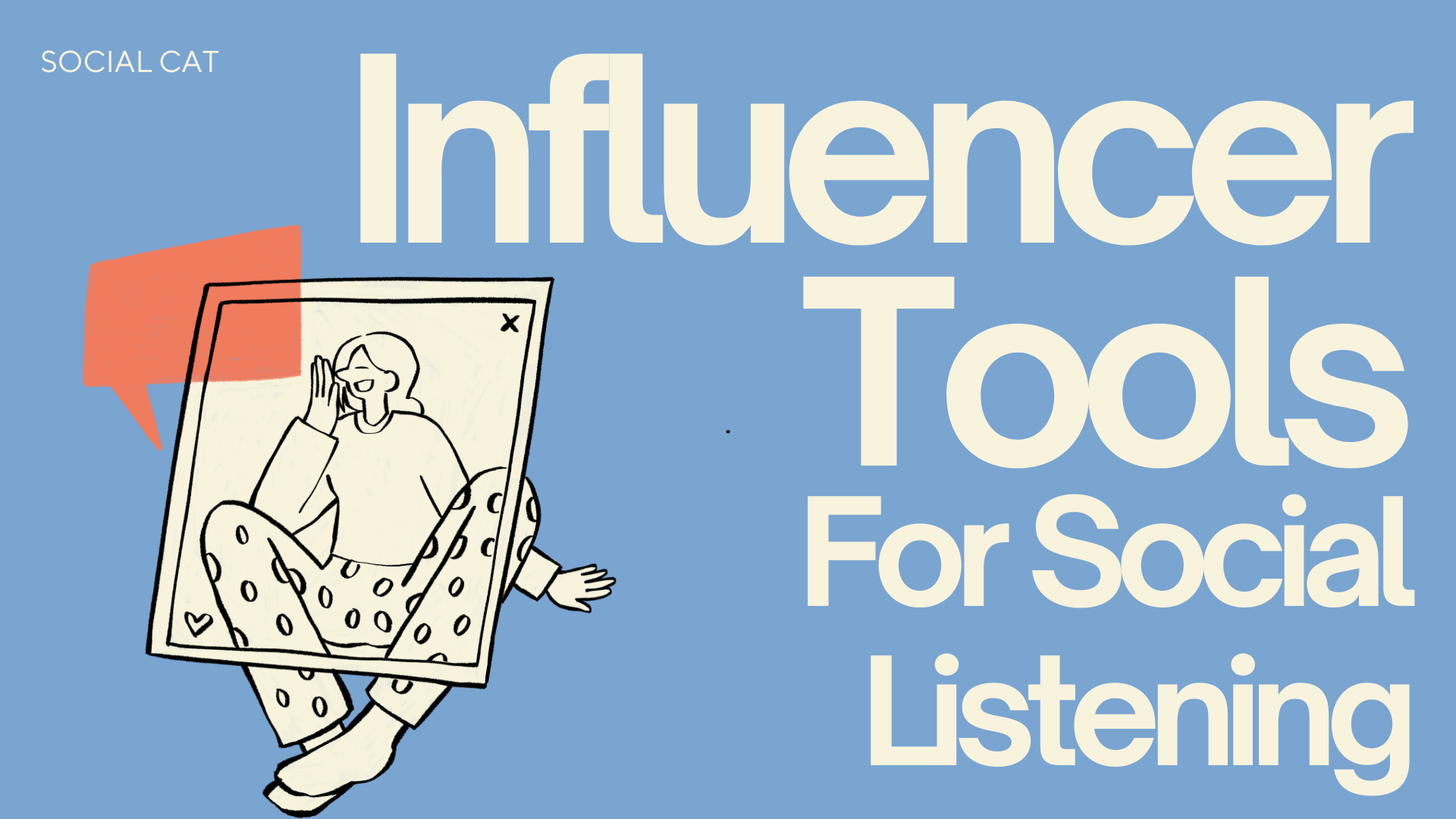
Social listening–aka paying attention to what people say about your brand online–is vastly underrated. This kind of knowledge can be a lifesaver when you’re trying to determine your unique selling points and what motivates people to buy.
If it’s at the top of your priority list, these tools can help. ⬇️
Hootsuite Insights
Hootsuite Insights offers real-time social listening capabilities, enabling brands to track keywords, hashtags, and brand mentions across social media platforms.
It provides in-depth sentiment analysis and trends, helping companies understand public perception and emerging conversations around their brand.
With comprehensive reports and visual analytics, Hootsuite Insights helps brands track their reputation and discover new opportunities for engagement.
Mention
Mention allows companies to monitor online conversations and track mentions of their brand, competitors, and industry keywords.
It offers real-time alerts and analytics, making it easy for brands to engage with their audience and respond quickly to relevant mentions or crises.
Mention’s easy-to-use dashboard and customizable alerts also help brands monitor important conversations and measure their social media impact.
Sprout Social
Sprout Social has a robust social listening feature that allows brands to track keywords, hashtags, and sentiment across various social media platforms. It also offers detailed analytics and reporting, including audience insights, competitor analysis, and performance metrics.
Sprout Social’s social listening tool is ideal for brands that want to monitor conversations, identify trends, and use insights to improve their social media strategies.
Tools for influencer content & UGC management
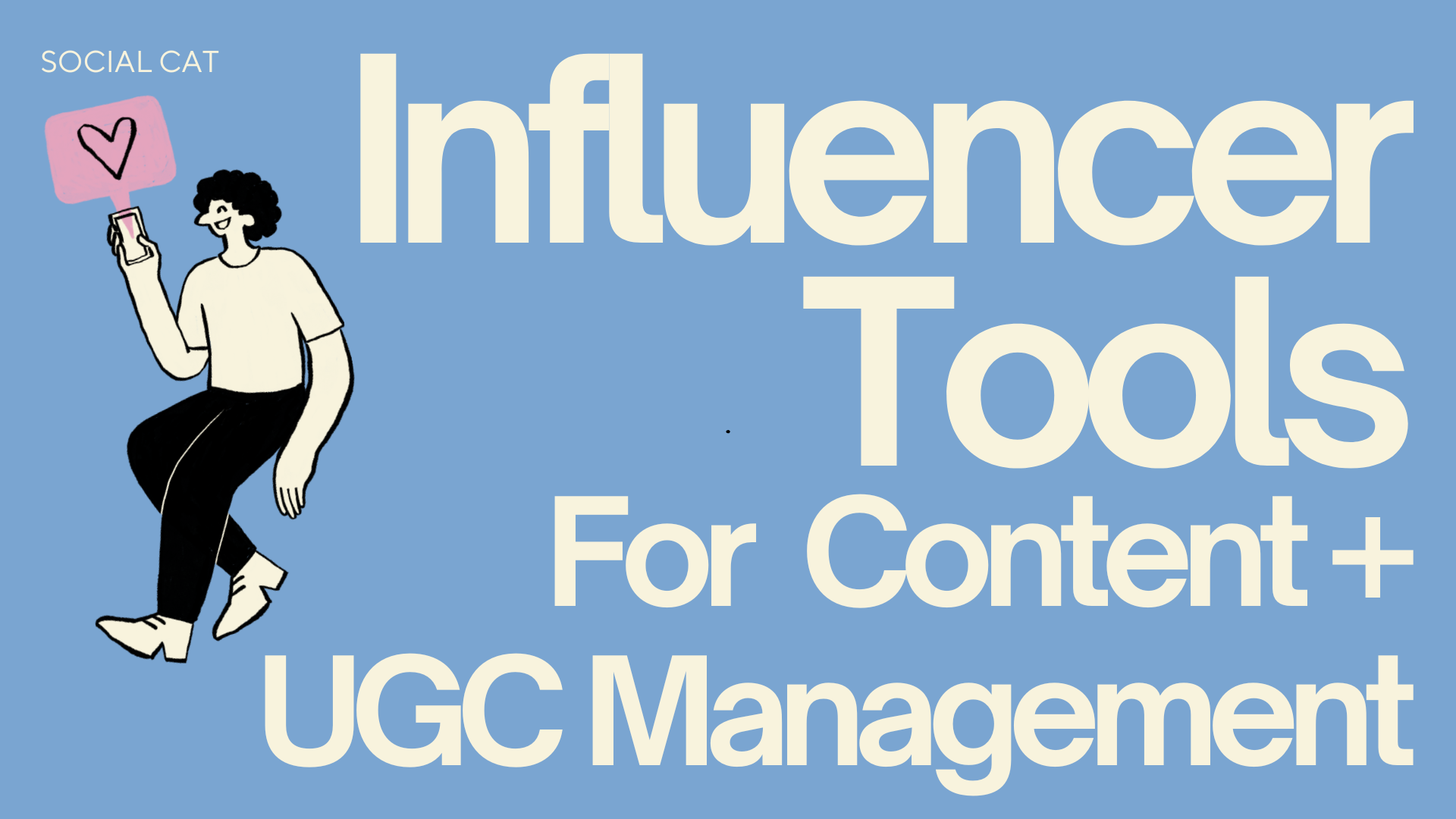
Of course, not every campaign is about the influencers. You’ll often be working with influencers because you want to build a library of high-quality content for your brand.
If content management and distribution is your primary concern, check out these options:
Later
Later allows you to schedule and manage influencer content across multiple platforms. You can easily manage UGC and track its performance for better engagement and conversion rates.
Most importantly, it provides a streamlined way to organize and utilize UGC for social media campaigns, making them much more efficient and organized.
Planoly
Planoly is a visual content planner for managing influencer content, scheduling UGC, and organizing campaigns. It integrates with Instagram for easy content curation.
Planoly is ideal for brands that manage visual content from influencers and maximize engagement through planned UGC campaigns. It makes it easy to see your plan so you can use the best content for every single post.
Dash Hudson
Dash Hudson is advanced visual marketing software for managing UGC and influencer collaborations. It offers insights into the best-performing influencer content and UGC trends–taking it beyond content management.
Dash Hudson’s predictive analysis makes it a powerful tool for brands looking to maximize the impact of their influencer campaigns. You can plan posts that will maximize engagement and sales, then go out and hire influencers to make the content for them!
How to choose the best influencer marketing tools

We haven’t named all the influencer marketing tools that ever existed in this article–just some of the top ones. And there are still a TON of them! So, how can you choose the best influencer marketing tools for your brand?
If you’re new to influencer marketing, we recommend starting with the affordable options and gradually adding the more expensive ones.
Why?
Because every new marketing channel has a learning curve, and influencer marketing is no different.
So why waste extra money when you’re just learning the ropes? It’s much better to start small, learn from your mistakes, and slowly grow your influencer marketing program over time.
But that still probably doesn’t 100% tell you who to choose the best influencer marketing tools, does it? So let’s go through that process, step by step.
Consider your goals & budget
Start by looking at your business and your goals for influencer marketing. The following questions can help:
- What does my influencer marketing program currently look like?
- Am I hoping to work with a few influencers or hundreds of them?
Your budget will play a role here, too, but let’s not get carried away. If, after asking yourself these questions, you realize that you only want to work with a few influencers, it’s better to stick with the free influencer marketing tools–or the inexpensive ones.
If, however, you want to end up working with hundreds of influencers, you will need to access all of the features these influencer marketing tools offer.
This means that you’ll have to choose a paid option. Sorry if we’re the first to tell you this, but it’s true.
You can’t do an extensive influencer marketing campaign with no budget–but if you stick with some of the more affordable influencer marketing tools and work with influencers willing to do gifted collaborations, you don’t have to have a big budget for it either.
Decide on functionality
So now that we have campaign size and budget out of the way, it’s time to look at the tools. Here are a few more things to consider:
- What features do you think you’ll use the most?
- Which ones are on your “must-have” list?
- What could you do without?
When you look at influencer marketing tools–especially the premium ones–they come with many features. But there’s no point in paying extra for things you won’t use–so make sure you know what you need before making your final decision.
Check ease of use & support
Next, you’ll want to consider what using the software in question is like. It will probably not be a good fit if you find it clunky or unintuitive. So make sure you know the answer to the following questions:
- How easy is it to learn how to use the software?
- What support do you get?
- Can you hop on demo calls or training sessions to grow your skills?
Once you’ve found the answers to these questions, you’ll know pretty much everything you need to know to pick out the best influencer tools for your brand.
Conclusion
There are a ton of different influencer marketing tools out there. They all offer a way to refine your searches and manage your campaigns. After that, they differ slightly in what they emphasize and how they help you make the most of your influencer marketing campaigns.
But here’s the deal: all these products exist because different companies have different needs.
So, when you’re choosing an influencer marketing tool for your brand, keep these three things in mind:
- Your brand’s NEEDS from this tool. (Not the nice-to-haves, but the things you’ll use and that you need to make this work.)
- Your BUDGET for influencer marketing.
- And your campaign GOALS–what are you trying to accomplish by running this campaign in the first place?
If you pick your tool based on that, you’ll do well.
Now, you can pick any of the tools we’ve mentioned in this article. But for most brands, Social Cat is the obvious place to start.
Why?
Because we offer a free trial that gives you full access to our platform for a week–not many other influencer marketing tools do that.
We focus on connecting brands with micro influencers, who are the least expensive and, arguably, the most effective influencers on the planet.
And because, quite frankly, our prices are the best you’ll find. There’s no reason to pay more to connect with great influencers–we have everything you need to find influencers and manage your campaigns on our platform.
Many influencer marketing tools will try to tell you that they have “the biggest database of influencers” or “proprietary software.” But can we level with you for a second?
The vast majority of influencer marketing platforms do the same thing.
So why waste money or spend hours navigating a clunky interface when you can connect with influencers, manage your collaborations, receive content, and analyze your results on Social Cat?
Start a free trial today–you’re going to love it!
Table of content
- What are Influencer Marketing Tools?
- Free or Paid Influencer Marketing Tools: Which is Right for Your Brand?
- Top Free Influencer Marketing Tools
- Top Paid Influencer Marketing Tools
- Best tools to find influencers
- Influencer tools for outreach
- Tools for influencer campaign management
- Influencer tools for social listening
- Tools for influencer content & UGC management
- How to choose the best influencer marketing tools
- Conclusion
Looking for influencers?
Table of content
- What are Influencer Marketing Tools?
- Free or Paid Influencer Marketing Tools: Which is Right for Your Brand?
- Top Free Influencer Marketing Tools
- Top Paid Influencer Marketing Tools
- Best tools to find influencers
- Influencer tools for outreach
- Tools for influencer campaign management
- Influencer tools for social listening
- Tools for influencer content & UGC management
- How to choose the best influencer marketing tools
- Conclusion


